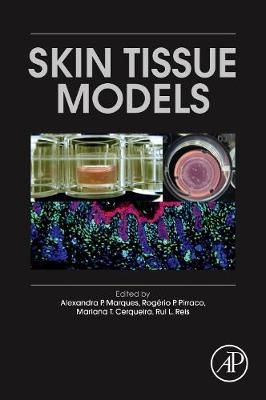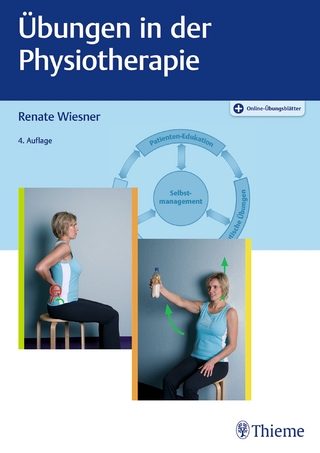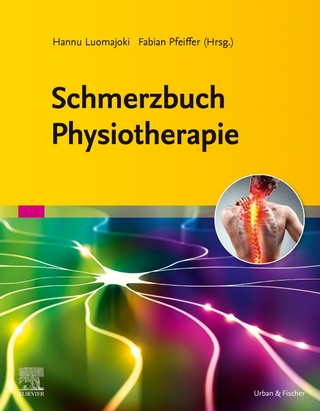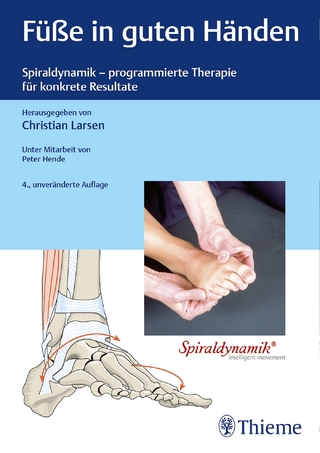
Skin Tissue Models
Academic Press Inc (Verlag)
978-0-12-810545-0 (ISBN)
The editors have created a table of contents which frames the relevance of skin tissue models for researchers as platforms to study skin biology and therapeutic approaches for different skin diseases, for clinicians as tissue substitutes, and for cosmetic and pharmaceutical industries as alternative test substrates that can replace animal models.
Alexandra Pinto Marques graduated in Biochemistry (1997) in the Faculty of Sciences of the University of Porto, Portugal, attended a one year specialisation course as part of the Biomedical Engineering Master/Doctoral Programme at the Faculty of Engineering of the University of Porto (1998) and obtained a PhD in Materials Science and Technology - Biomaterials in the University of Minho, Portugal and in cooperation with the University of Liverpool, UK (2004). She is Principal Investigator, a founder member and Vice-Director of the 3B’s Research Group, a Research Unit of the University of Minho, Portugal, where she has been build her career in the field of skin tissue engineering. She has been integrating stem cells and biomaterials knowledge into tissue engineering as a way to define innovative strategies to improve the functionality of skin tissue engineered constructs. The establishment of in vitro 3D culture platforms to understand cellular crosstalk as well to be able to modulate the engineered constructs outcome has been the focus of her work. She has been awarded successive career grants among which a Consolidator Grant from the European Research Council (2016). Dr. Rui Reis is Vice-President for Research and Innovation of University of Minho, Portugal, Director of 3B’s Research Group and Director of ICVS/3B´s Associate Laboratory, both of UMinho. He’s the CEO of the European Institute of Excellence on Tissue Engineering and Regenerative Medicine, the Coordinator of the Discoveries Centre for Regenerative and Precision Medicine, the Global Past-President of the Tissue Engineering and Regenerative Medicine International Society and the Editor-in-chief of the Journal of Tissue Engineering and Regenerative Medicine. He’s edited 18 books, 10 special issue journals, 280 book chapters and has more than 1225 published works listed on ISI Web of Knowledge, being an inventor of around 70 patents. He’s been awarded many important international prizes, including the TERMIS-EU contributions to the literature Award and the TERMIS-EU Career Achievement Award, and recently the UNESCO- International Life Sciences Award and the IET A. F. Harvey Engineering Research Prize. Rogério P. Pirraco (born 1982 Porto, Portugal) concluded his four year-graduation in Applied Biology in 2005, at the University of Minho and his PhD at the same university in 2011. During his PhD, he spent a total of one year at Professor Teruo Okano’s Institute of Advanced Biomedical Engineering and Science of the Tokyo’s Women Medical University in Tokyo, Japan, where he acquired knowledge in cell sheet engineering and its application in animal models. In 2016, Rogério got a 5 year FCT IF contract (career development grant from the Portuguese Science and Technology Agency) that will allow him to pursue his research interests in an independent way. Currently, his research interests are focused on the use of cell sheet engineering, stem cells and hypoxia for Tissue Engineering strategies. Mariana T. Cerqueira (born in 1983 in Porto, Portugal) concluded four years graduation in Biology (2006), in the Faculty of Sciences of the University of Porto, performing a final work thesis at Stem Cell Laboratory, King’s College London, UK, where she got the opportunity of the first contact with the latest cutting edge research. She carried out her academic career by joining 3B’s Research Group, University of Minho, where she concluded a PhD in Tissue Engineering, Regenerative Medicine and Stem Cells (2013), as the first graduated student in the field of Skin Regeneration in the group and where she has been working since then. After concluding a Post-Doctoral fellowship awarded by Portuguese Foundation of Science and Technology, Mariana currently works as an Invited Assistant Researcher. By taking advantage of the knowledge acquainted during graduate studies and novel collaborations established, she has been focused on the development of different skin tissue engineering strategies by exploring mainly stem cell-based approaches to fine tune their role in different types of wounds. She has been publishing several works in refereed journals, awarded two front covers in international journals, and in international conference proceedings.
Section 1 – Therapeutic Molecules and Cosmetics Testing1. Cosmetic industry requirements regarding skin models for cosmetic testing Christian Pellevoisin, Charbel Bouez, José Cotovio2. Overall perspective on the clinical importance of skin models Yusef Yousuf, Saeid Amini-Nik, Marc G. Jeschke,
Section 2 - Skin Diseases: clinical demands and diseased-skin in vitro models3. In vitro models of Melanoma Dagmar Kulms, Friedegund Meier4. Organotypic and humanized animal models of genodermatoses Esteban Chacón-Solan, Sara Guerrero-Aspizua, Lucía Martínez-Santamaría, Marcela Del Rio, Fernando Larcher5. In vitro models of Psoriasis Bryan Roy, Mélissa Simard, Isabelle Lorthois, Audrey Bélanger, Maxim Maheux, Alexandra Duque-Fernandez, Geneviève Rioux, Philippe Simard, Marianne Deslauriers, Louis-Charles Masson, Alexandre Morin and Roxane Pouliot6. In vitro models of VitiligoMuriel Cario-André, Katia Boniface, François-Xavier Bernard, Alain Taieb, Maria Lucia Dell’Anna, Julien Seneschal7. In vitro models of squamous cell carcinoma Elizabeth Pavez Loriè, Hans-Jürgen Stark, Manuel Berning, Petra Boukamp
Section 3 – Skin Substitutes: Clinical demands and skin tissue equivalents 8. Strategies to promote the vascularization of skin substitutes after transplantation Jennifer Bourland, Julie Fradette9. On the path to scarring-free skin regeneration approaches Mohammed Ashrafi, Adam Hague, Mohamed Baguneid, Teresa Alonso-Rasgado, Ardeshir Bayat10. Pre-clinical Models for Wound Healing Studies Irena Pastar, Liang Liang, Andrew P Sawaya, Tongyu Cao Wikramanayake, George D Glinos, Stephan Drakulich, Vivien Chen, Olivera Stojadinovic, Stephen C Davis, and Marjana Tomic-Canic 11. The importance of targeting inflammation in skin regeneration Megan Schrementi, Lin Chen, Luisa Ann DiPietro
Section 4 – In Vitro Models as study platforms of skin Biology12. In Vitro Models to study hair follicles generation Ana Korosec, Beate Maria Lichtenberger13. In Vitro Models to study cutaneous innervation mechanisms Nicolas Lebonvallet, Christelle Le Gall-Ianotto, Jérémy Chéret, Raphaël Leschiera, Matthieu Talagas, Raphaële Le Garrec, Virginie Buhé, Killian L’herondelle, Olivier Gouin, Mehdi Sakka, Nicholas Boulais, Ulysse Pereira, Jean-Luc Carré, Laurent Misery14. Skin in vitro models to study dermal white adipose tissue role in skin healing Manuela E. L. Lago, Mariana T. Cerqueira, Rogério P. Pirraco, Rui L. Reis, Alexandra P. Marques15. Immunocompetent in vitro skin models Victoria Hutter, Stewart B Kirton, David YS Chau
Section 5 - Emerging technologies for the development of 3D skin models16. Additive manufacturing in the development of 3D skin models Kelsey Retting, Deborah G. Nguyen 17. Induced Pluripotent Stem Cells Potential to generate skin tissue models Olga Kashpur, Avi Smith, Nailia Mukhamedshina, Jeremy Baskin, Yulia Shamis, Kyle Hewitt, Behzad Gerami-Naini, Jonathan A. Garlick18. Requirements of skin tissue models for high throughput screening Stephanie H. Mathes, Christian N. Parker
| Erscheinungsdatum | 01.12.2017 |
|---|---|
| Verlagsort | San Diego |
| Sprache | englisch |
| Maße | 152 x 229 mm |
| Gewicht | 750 g |
| Themenwelt | Medizin / Pharmazie ► Physiotherapie / Ergotherapie ► Orthopädie |
| Naturwissenschaften ► Biologie ► Biochemie | |
| Technik ► Medizintechnik | |
| Technik ► Umwelttechnik / Biotechnologie | |
| ISBN-10 | 0-12-810545-3 / 0128105453 |
| ISBN-13 | 978-0-12-810545-0 / 9780128105450 |
| Zustand | Neuware |
| Informationen gemäß Produktsicherheitsverordnung (GPSR) | |
| Haben Sie eine Frage zum Produkt? |
aus dem Bereich


